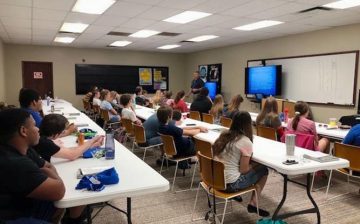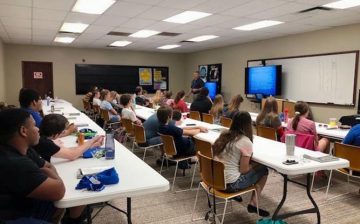Should I Take Driver’s Ed at 17 or Wait Until 18? A Guide for Illinois Residents
Driving marks a significant milestone in a teenager’s life, symbolizing newfound independence and responsibility. As a 17-year-old residing in Illinois, the decision to take driver’s education now or wait until turning 18 can be perplexing. In this guide, we’ll explore the advantages of starting driver’s education at 17, considerations for waiting until 18, Illinois-specific regulations, and engaging learning techniques. By the end, you’ll be equipped with the knowledge to make an informed decision about your driving journey.
- Introduction
- Importance of Driver’s Education
Learning to drive is more than just acquiring a skill; it’s about developing responsible habits and making safe decisions on the road. Adult driving course is the best option for your driver training.
- Decision-making Dilemma at 17
As a 17-year-old, the excitement of driving may clash with uncertainties about readiness and eligibility.
2.Addressing Concerns about Age and Eligibility
Understanding the legal requirements and personal considerations surrounding the decision to take driver’s ed at 17.
- Advantages of Taking Driver’s Ed at 17
- Building a Strong Foundation
Early exposure to driver’s education lays the groundwork for a lifetime of safe driving habits.
- Gaining Essential Skills Early
Learning to drive at 17 allows you to acquire crucial skills before entering adulthood.
2. Lowering Insurance Costs
Completing driver’s education may lead to reduced insurance premiums for young drivers. Here Driving school cost are so reasonable so anyone can take it with age more than 18years.

III. Considerations for Waiting Until 18
- Legal Requirements in Illinois
Exploring the legal obligations and age-related guidelines for obtaining a driver’s license in Illinois.
2. Mature Decision-making
Waiting until 18 provides additional time for maturity and sound decision-making.
3. Potential Benefits of Waiting
Considering the potential benefits, such as increased confidence and responsibility.
- Illinois-specific Regulations
- Overview of Driver’s Education Requirements
A detailed look at the specific requirements for completing driver’s education in Illinois.
- Age-related Guidelines
Understanding the age-related guidelines and restrictions for obtaining a driver’s license.
2. Legal Implications of Waiting
Examining any legal implications or advantages associated with waiting until turning 18.
- Common Concerns and Misconceptions
- Safety Concerns
Addressing concerns about the safety of young drivers and the effectiveness of driver’s education.
- Parental Guidance and Support
The role of parents in guiding and supporting their teenager through the process.
2. Social and Peer Influences
Exploring how peer pressure and societal expectations may influence the decision-making process.
- Personal Stories and Experiences
- Success Stories of Early Learners
Hearing inspiring tales of individuals who successfully completed driver’s education at 17.
- Regrets and Lessons Learned from Waiting
Learning from those who regretted waiting and the lessons they gained from their experiences.
2. Balancing Individual Needs and Societal Expectations
Navigating the balance between personal desires and societal expectations regarding driving milestones.
VII. Addressing Perplexity and Burstiness in Decision-making
- Navigating the Complexity of Choices
Understanding the challenges and complexities young individuals face when making decisions.
2. Understanding the Burst of Information at 17
Dealing with the sudden influx of information and choices as a 17-year-old.
3.Balancing Emotional and Rational Aspects
Striking a balance between emotional desires and rational decision-making in the context of driving education.
VIII. Engaging Learning Techniques
- Benefits of Interactive Learning
Exploring the advantages of interactive learning methods in driver’s education.
2. Incorporating Real-life Scenarios
How real-life scenarios can enhance the learning experience and prepare young drivers for the road.
3. Preparing for the Unexpected on the Road
Understanding the importance of anticipating and preparing for unexpected situations while driving.
- Keeping It Simple: The Driver’s Ed Process
- Breaking Down the Steps
Simplifying the driver’s education process into manageable steps for easy comprehension.
- Understanding the Coursework
A brief overview of the coursework involved in driver’s education programs.
2. Demystifying the Driving Test
Clarifying common misconceptions and anxieties surrounding the driving test.
- Active Voice in Decision-making
- Empowering the Individual to Choose
Encouraging young drivers to take an active role in deciding when to pursue driver’s education.
- Taking Charge of One’s Learning Journey
Empowering individuals to be proactive in their learning process.
- Active Engagement with Driving Education
Highlighting the benefits of actively engaging with driver’s education rather than passively participating.
- Brief Overview of Driver’s Ed Curriculum
- Classroom Sessions
The significance of classroom sessions in providing theoretical knowledge.
- Behind-the-Wheel Training
The practical aspects of behind-the-wheel training and its role in skill development.
- Importance of the Written Exam
Understanding the importance of the written exam as a part of the driver’s education curriculum.
XII. Analogies and Metaphors in the Learning Process
- The Road to Independence
Drawing parallels between the journey of learning to drive and gaining independence in life.
- Traffic Rules as Life Principles
Applying traffic rules as metaphors for essential life principles.
- Navigating Life’s Twists and Turns
Using driving analogies to navigate life’s challenges and uncertainties.
XIII. Conclusion
- Empowering Young Drivers
Encouraging young individuals to embrace the opportunity to learn and drive responsibly.
- Making an Informed Decision
Summarizing key considerations to help make an informed decision about when to take driver’s education.
- Encouragement for the Journey Ahead
Offering words of encouragement for the exciting and responsible journey of learning to drive.
FAQs
- Is it mandatory to take driver’s education in Illinois?
- Yes, in Illinois, individuals under 18 must complete a state-approved driver’s education program.
- What are the benefits of starting driver’s education at 17?
- Starting at 17 allows you to build a strong foundation, gain essential skills early, and potentially lower insurance costs.
- Can waiting until 18 have legal implications in Illinois?
- While waiting until 18 is an option, understanding the legal requirements and potential implications is crucial.
- How can parents support their teenager in the decision-making process?
- Parents can provide guidance, support, and facilitate open communication to help their teenager make an informed decision.
- Is interactive learning important in driver’s education?
- Yes, interactive learning enhances the understanding and retention of crucial information in driver’s education.





